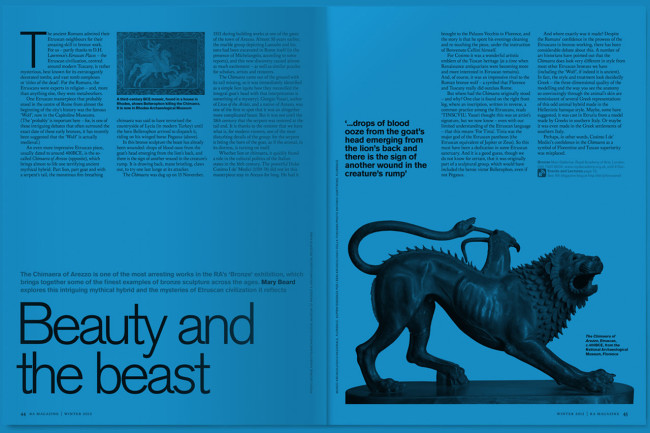Grand masters: Hawksmoor vs Wren
Grand masters: Hawksmoor vs Wren
By Owen Hopkins
Published 11 November 2015
From a contemporary perspective, does Nicholas Hawksmoor outshine his master, Christopher Wren? Owen Hopkins reassesses two geniuses of British Baroque architecture.
-
From the Winter 2015 issue of RA Magazine, issued quarterly to Friends of the RA.
Ah, Christopher Wren. Mathematical genius. President of the Royal Society. The ear of several monarchs. Not to mention architect extraordinaire. Designer of St Paul’s Cathedral, 50 of London’s City churches, Greenwich Hospital (aka the Old Royal Naval College), Hampton Court, the Sheldonian Theatre in Oxford. And much else besides, both built and unbuilt. Inspiration of Lutyens and the Edwardian Baroque. Immortalised, of all places, on the old £50 note. Surely unrivalled as Britain’s greatest architect? And especially not by his own pupil, the mysterious figure of Nicholas Hawksmoor?
Certainly, Hawksmoor poses no threat to Wren in terms of the scale of his achievement. He is best known for the mausoleum at Castle Howard, work at All Souls College, Oxford, and six idiosyncratic London churches. While the prominence of Wren’s works ensured that they could not be ignored even when out of fashion, Hawksmoor lay largely forgotten for nearly 200 years after his death. Yet, if we’re talking about the capacity of buildings to enchant and enrapture, to provoke and perplex, there is surely no greater master than Hawksmoor.
We know comparatively little about Hawksmoor the man. His early life is more or less a blank slate and he only really appears in historical records when he enters Wren’s office in around 1680. This was Hawksmoor’s big break.
-

The interior of St Stephen's Church Walbrook, London, by Christopher Wren

The interior of St Mary’s Church Woolnoth, London, by Nicholas Hawksmoor
-
Perhaps unusually for someone for whom the word genius is no exaggeration, Wren was a brilliant teacher, who instructed, guided and nurtured the young Hawksmoor. Within a few years his charge had been given several key responsibilities, and rapidly emerged as the most talented and trusted draughtsman of Wren’s office.
Wren’s drawing style was shaped by a scientific training that emphasised accuracy and precision as guiding principles. His drawings are all about the tightly defined line, which he used to arrange the elements of classical architecture. By contrast, as Hawksmoor’s technique developed, and especially after working with the master carver Grinling Gibbons, the young architect adopted a far more allusive approach, using pen, ink and wash to create the suggestion of form. Accuracy would come later. What mattered most to Hawksmoor was to convey the impression of how a building might appear in reality.
From our 21st-century perspective, it is hard to comprehend quite how revolutionary Hawksmoor’s approach was. No other British architect had yet conceived architecture in this way: as an almost sculptural entity of mass and volume onto which ornament was applied, often in exaggerated form. We see this most spectacularly in his London churches: huge expanses of white stone, incised as if by a scalpel; stacks of layered masonry rising up into the sky; and the signature oversized keystones that teeter above the windows and doors.
-
Video
Writer Philip Pullman discusses Hawksmoor's architecture
This video was created for the exhibition ‘Nicholas Hawksmoor: Architect of the Imagination’ at the Royal Academy of Arts, 4 February—17 June 2012.
-
A Wren church is invariably a more controlled affair. A neat comparison is between Wren’s St Stephen Walbrook (above left), near Bank, and Hawksmoor’s nearby St Mary Woolnoth (above right). St Stephen’s has arguably Wren’s greatest church interior: a beautifully composed domed space marked by overriding unity and an even light. St Mary’s interior, in contrast, operates on a different register: a relatively dark perimeter around a central space powerfully lit from above by huge lunette windows invisible from outside. It is a building of stunning drama that offers something new every time you enter.
While Wren’s buildings are beautiful and elegant, they are, I would argue, ultimately fixed in the meanings and interpretations they invite. Hawksmoor’s are far more enigmatic, and still after all these years influencing artists, writers and architects of all persuasions – surely the most important test of great architecture.
From the Shadows: The Architecture and Afterlife of Nicholas Hawksmoor by Owen Hopkins is published by Reaktion Books, £25 hardback, in November 2015.
Owen Hopkins is the RA’s Architecture Programme Curator. He curates ‘Mavericks: Twelve Architects Who Broke the Mould of British Architecture’ in the Architecture Space at the Academy from 26 January – 20 April 2016.
-
-
Enjoyed this article?
Become a Friend to receive RA Magazine
As well as free entry to all of our exhibitions, Friends of the RA enjoy one of Britain’s most respected art magazines, delivered directly to your door. Why not join the club?

-






